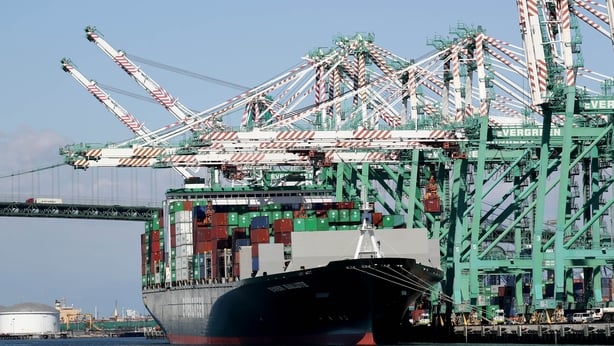China will levy tariffs on about $60 billion worth of US goods in retaliation for new US tariffs, as previously planned, but has reduced the volume of tariffs that it will collect on the products.
The tariff rates will be levied at 5% and 10%, instead of the previously proposed rates of 5%, 10%, 20% and 25%, the Finance Ministry said on its website today.
China also said it will impose a 10% tariff on US products it previously designated for a rate of 20% and 25%.
Liquefied natural gas (LNG), for example, was previously under the 25% tariff category but now will be subject to a tariff of 10%.
The new tariff measures will take effect on September 24, the date when the Trump administration says it will begin to levy new tariffs of 10% on $200 billion of Chinese products.
The tit-for-tat measures are the latest escalation in an increasingly protracted trade dispute between the world's two largest economies.
Earlier US Commerce Secretary Wilbur Ross said that it was up to China to take the next steps on trade talks with the US.
Mr Ross was speaking after US President Donald Trump effectively broadsided one of the world's largest trade relationships, announcing plans to proceed with tariffs on another $200 billion in US imports of Chinese goods.
US imposes new tariffs on $200 billion of Chinese goods pic.twitter.com/EAQrOoivUN
— RTÉ Business (@RTEbusiness) September 18, 2018
The new tariffs will take effect next Monday, starting at 10% and rising to 25% at the end of the year unless China changes what Mr Trump calls its "unfair trade practices".
Taken with the $50 billion in tariffs already in place, this means roughly half of everything Americans buy from China, their largest source for imports, is now subject to punitive import duties.

Whole industrial sectors stand to feel the effects, including agriculture, manufacturing, textiles and retail.
"Our purpose is to have constructive negotiations with the Chinese to resolve the fundamental issues. So the question about whether or when to have a discussion is very importantly in their ballpark," Mr Ross said in a television interview.
The Trump administration says its aggressive stance is to pressure Beijing to change policies that allow for the theft of US technology and undercut American producers.
The proposal for the tariffs drew protest from technology companies earlier this year, but the final list of taxed devices described by a senior administration official avoids many big consumer brand names and products.
In a statement announcing the new round of tariffs, Mr Trump warned that if China takes retaliatory action against US farmers or industries, "we will immediately pursue phase three, which is tariffs on approximately $267bn of additional imports".
Furthermore, if the Trump administration enacts a further $267 billion round of tariffs, nearly every Chinese import is likely to be included in the list.

